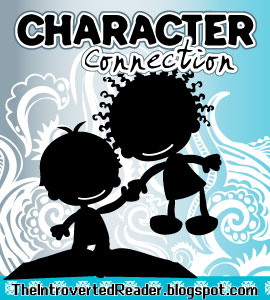
Yes, Allegra Goodman’s The Cookbook Collector tells the absorbing story of two motherless, archetypically opposite sisters finding their way through the Dot.Com Boom in 1990s Berkeley, California. But as much as I liked the book, and I really did, neither of them is the subject of my Character Connection. Because with The Cookbook Collector, Goodman has written one of the absolute sexiest characters I have encountered in a book for quite a while: George Friedman, owner and operator of Yorick’s Used and Rare Books, where the younger and flightier of the beautiful Bach sisters works.
George Friedman has it all. A 40-something Microsoft millionaire, he sold his shares at their peak, and his money now funds a relentless search for authenticity. He doesn’t just want the best of everything – with lots of money that would be easy. What he’s looking for is the rare, the extraordinary, the unique, from Grgich Hill wines to his perfectly restored Maybeck house. He’s honorable. He’s nouveau-patrician. He’s handsome. He’s smart. And he’s a book lover. Are you swooning already?
“He was a reader, an autodidact with such a love for Great Books that he scarcely passed anymore for a Berkeley liberal. Strange to say, but at this time in his life George would have a happier conversation with Berkeley, the philosopher, than with most of his old Berkeley friends.”Now anyone who has ever read an Austen novel knows that an unmarried, handsome, wealthy man, especially one who comes off as just a bit too self-sufficient, must be “in want of a wife.” And there’s also no doubt that George owes a great deal to Austen’s own legendarily wealthy, difficult but ultimately noble heroes, particularly my best crush forever, Mr. Darcy. So I don’t think it’s giving too much away to say that I anticipated the potential outcome of George’s storyline within the first page of his appearance, cranky and authoritarian – but still quite endearing – shouting out orders to Jessamine. Still, the novel has some major twists, so it didn’t seem at all contrived or predictable.
But what I really like is how Goodman has reimagined the Darcy-model for the beginning of the 21st century. George is a fabulous cook, a runner and definitely not a smotherer. He is selfish, certainly. How can anyone who bases his life on acquiring the nextest, bestest, shiniest thing fail to be a selfish? But it’s clear from the beginning that what George really needs someone to share his collections with. In fact, if he had someone to share them with – if he could actually find the one, truly unique thing in the world, someone to love him completely – he wouldn’t need the collections at all. And I really couldn’t help rooting for him to find that person throughout this really enjoyable book, because he struck me as the most decent character in it.
I’m really glad George Friedman was my first Character Connection – it was kind of like a good first date, if my husband will forgive the analogy. I have never participated in a meme before, but I have read a few of these and truly enjoyed them. Writing this has definitely given me a different perspective on my book reviews, and I’m sure I’ll participate again. So thanks to the Introverted Reader for hosting Character Connections, and thanks to my awesome buddy Jess at Desperado Penguin who suggested we read this book together and “simul-blog.”
Move over, Mr. Darcy. There’s a new literary crush on the block. And he’s even awesome in the kitchen. I’m in literary love.








